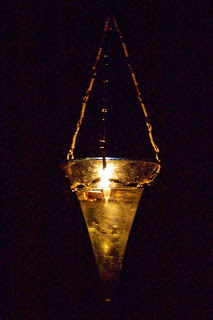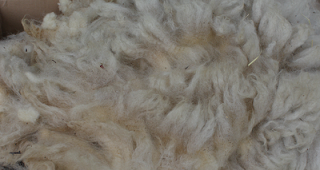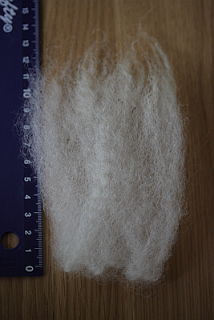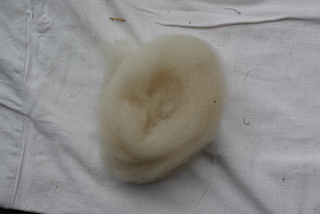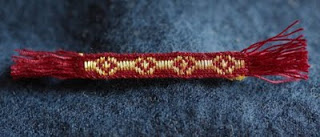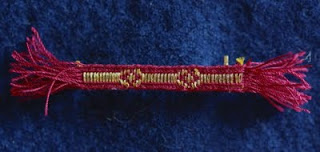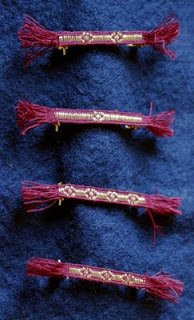I've been working on new stuff for the online shop - distaffs, for instance, and little glass containers for the oil-light wicks. And now I'm all blocked in my enthusiasm, as somehow my shop system refuses to let me upload the pretty pictures.
It stumps me - I've already checked the usual culprits, and everything seems to be in order. I've updated the shop system and checked the database... nothing. So I will have to add the things without pictures for now, and hope I can solve the problem soon.
Meanwhile, have some more pictures taken at Freienfels, where I did an outdoor test of the oil light wicks in a medieval-style glass lamp:
The lamp and the chains were a present to me from several years ago, together with a different kind of wick-holder - a metal bridge that was supposed to hang across the oil surface and hold the wick. It did work, but not very well, as the holder and wick needed very frequent adjusting for a good flame.
Not so with the floaters - as long as there is oil to burn, it burns quietly and like a charm. Towards the very end, there are some quiet sputtering noises, warning you that the lamp will soon run out of fuel, so you have time to refill with some oil, or you can just wait until it has burned itself out.
We had the lamp hanging outside, and with the water level low enough, it was even relatively wind-resistant. I really enjoyed having it hang there, and it was giving a lot of light all around: the beauty of the glass lamp is that it's also illuminating the things right below the lamp, as opposed to a lantern or candle-holder. I will definitely use this lamp a lot more often in the future!
It stumps me - I've already checked the usual culprits, and everything seems to be in order. I've updated the shop system and checked the database... nothing. So I will have to add the things without pictures for now, and hope I can solve the problem soon.
Meanwhile, have some more pictures taken at Freienfels, where I did an outdoor test of the oil light wicks in a medieval-style glass lamp:
The lamp and the chains were a present to me from several years ago, together with a different kind of wick-holder - a metal bridge that was supposed to hang across the oil surface and hold the wick. It did work, but not very well, as the holder and wick needed very frequent adjusting for a good flame.
Not so with the floaters - as long as there is oil to burn, it burns quietly and like a charm. Towards the very end, there are some quiet sputtering noises, warning you that the lamp will soon run out of fuel, so you have time to refill with some oil, or you can just wait until it has burned itself out.
We had the lamp hanging outside, and with the water level low enough, it was even relatively wind-resistant. I really enjoyed having it hang there, and it was giving a lot of light all around: the beauty of the glass lamp is that it's also illuminating the things right below the lamp, as opposed to a lantern or candle-holder. I will definitely use this lamp a lot more often in the future!




